Five-Part Series on Visual Phasing:
- Part I – Explaining visual phasing and identifying/labeling recombination points (November 21, 2016)
- Part II – Assigning segments of DNA (November 22, 2016)
- Part III – Using cousin matches to identify which grandparent provided the segments (November 25, 2016)
- Part IV – Mapping my own chromosome using the visually phased paternal chromosomes (November 26, 2016)
- Part V – Using the mapped DNA with new matches
In “Visual Phasing: An Example (Part 1),” we identified and labeled all of the recombination points in the three siblings, Susan, Brooke, and Felix. Then, in Part 2 of the series, we used the identified and labeled recombination points to assign segments of DNA to the four grandparents (the blue grandparent and grey grandparent pair, and the purple grandparent and green grandparent pair). In Part 3 of the series, we used cousin matching to identify the grandparental source of the chromosomal segments. After Part 3, we had the following for Brooke, Susan, and Felix:
Since Felix is my father and Susan and Brooke are my aunts, I might be able to compare my DNA to my aunts in order to identify which of the segments I obtained from my father.
Of course, when I compare my father to myself, I get the following:
So that comparison isn’t going to be helpful at all.
What I do know, however, is that this is the ENTIRE universe of DNA that I could possibly obtain from my father on chromosome 21:
So some possible chromosomes that I could have inherited include full copies of either the maternal or paternal chromosomes (meaning no recombination took place), or a recombined mixture of the maternal AND paternal chromosomes:
The “Random Mixture” chromosome is just one of many different examples I could have created. As we’ll see below, I did indeed inherit a random mixture chromosome, but not the one shown above.
I’ll begin this process by comparing my chromosome 21 to my aunts’ chromosome 21:
So I share one or more great segments with both aunts on chromosome 21.
Let’s focus on the left end of the chromosome where I share segments with both aunts. Remember that Felix’s chromosome is the possible universe from which I can pull DNA. That means that for most of the segment shown in the red boxes, I could NOT have inherited the maternal copy of the chromosome (blue), since my father didn’t have that portion after 16.5 Mb.
And if you compare the start to 16.5 Mb, you see that I share that segment with Brooke. Since Brooke and Felix only share purple at that region, I must have inherited purple as well.
From about 29 Mb to about 31 Mb, I share DNA entirely with Brooke (meaning it must be purple), since Felix doesn’t share the blue grandparent with Brooke at that region.
As a result, on my copy of chromosome 21, I’ve filled out purple from the start of the chromosome to position 31 Mb:
Let’s focus on the next segment I share with aunt Susan, from about 30-31 Mb to 36 Mb (in the dotted red box). Remember again that Felix’s chromosome is the possible universe from which I can pull DNA. That means that for the segment shown in the red boxes from 30/31 to 36 Mb, it can either be green or gray.
Susan doesn’t have gray DNA at that region, so it must be green. That makes sense, since Brooke doesn’t match me at that region, and she doesn’t have any green DNA.
But you see that at 36 Mb, something changes. After that, even though both Felix and Susan have green DNA from 36 Mb to the end, I don’t share any more DNA with Susan.
That means that there must have been recombination at that point, switching from the paternal chromosome to the maternal chromosome (gray). Again that makes sense, as neither Susan nor Brooke have any gray DNA at that region, and I don’t share any DNA with them:
And this is one of the many reasons why I love Visual Phasing. Without having tested ANY of my grandparents or great-grandparents, I’ve been able to map my entire chromosome 21 back to them:
This is fascinating in its own right, tracking segments of DNA through both time and space. However, it also has some very important implications for matching! If a new match comes along that shares DNA with me on the paternal copy of chromosome 21, I know exactly which line of my family tree to search for a shared ancestor. In the case of Laurentine Mullin, I can narrow my tree down to 25%, and in the case of the rest of the chromosome, I can narrow the search down to 12.5% of my entire family tree!
In Part 5 of the series, we’ll look at ways to use the mapped chromosome 21 to explore new matches and other techniques.
NOTE: This process does NOT always work, when the sharing with the aunts does not line up to allow you do deduce which segments you obtained. Here, for example, is the entire map of chromosome 17 that I’m able to do at the current time, using the process described above:
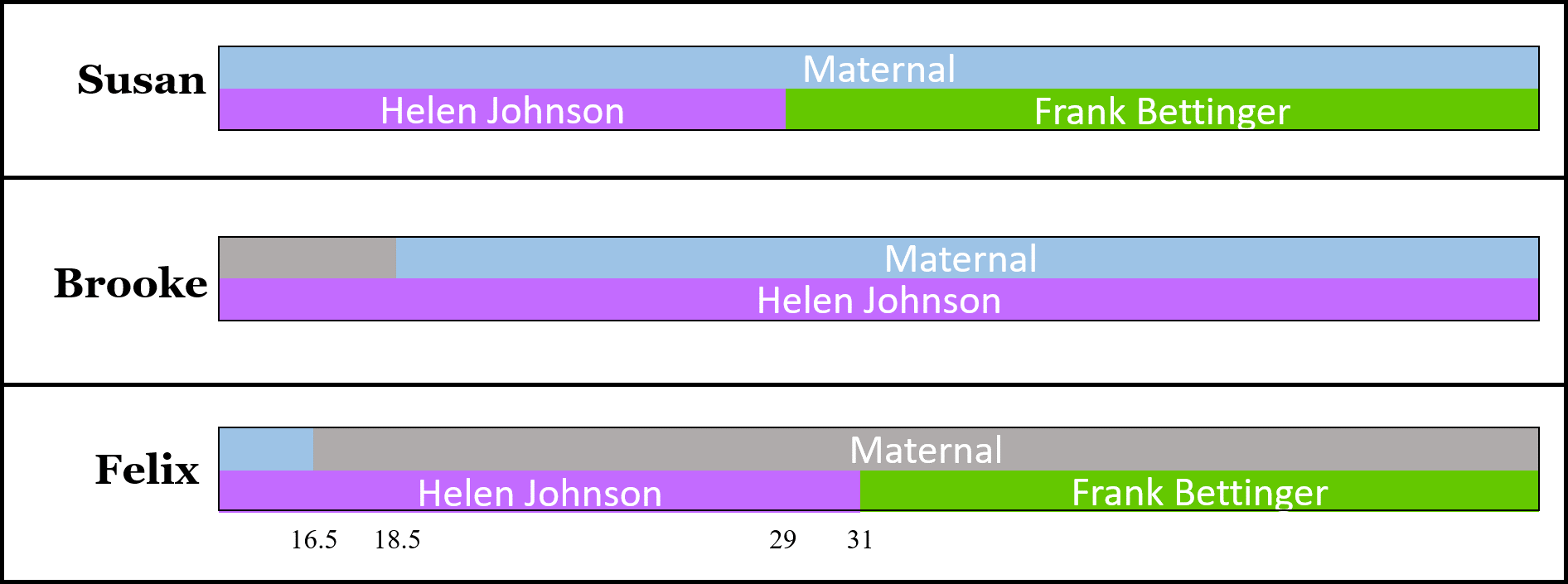


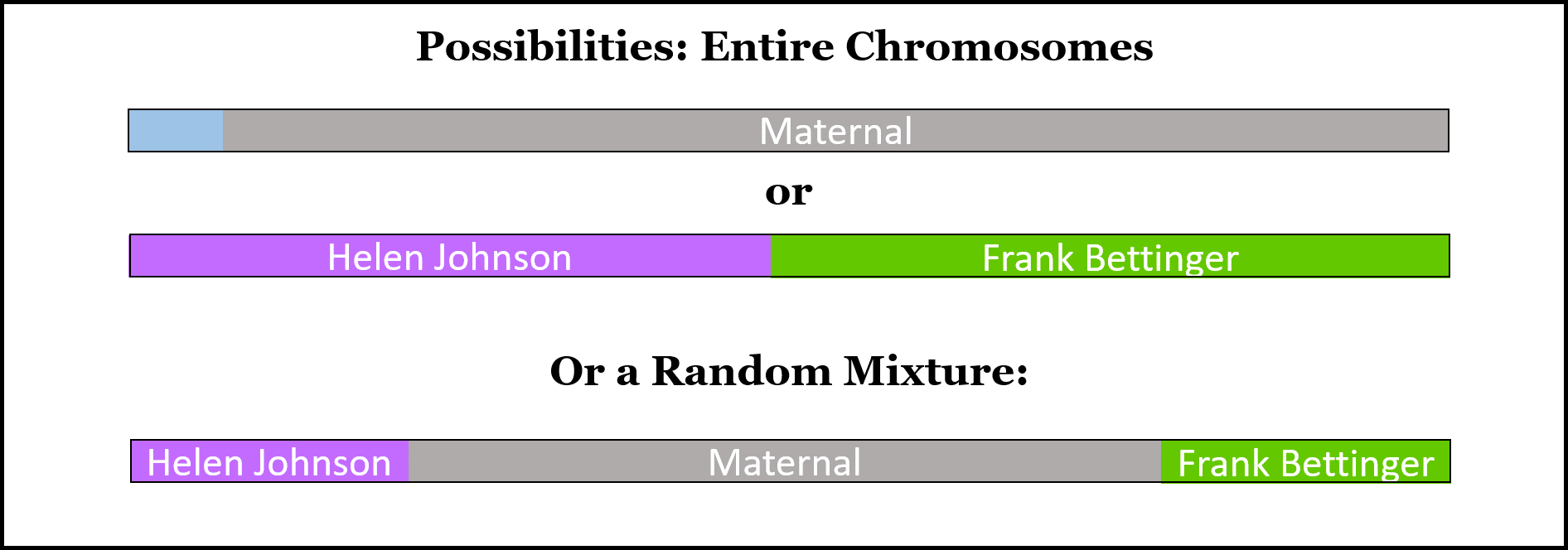
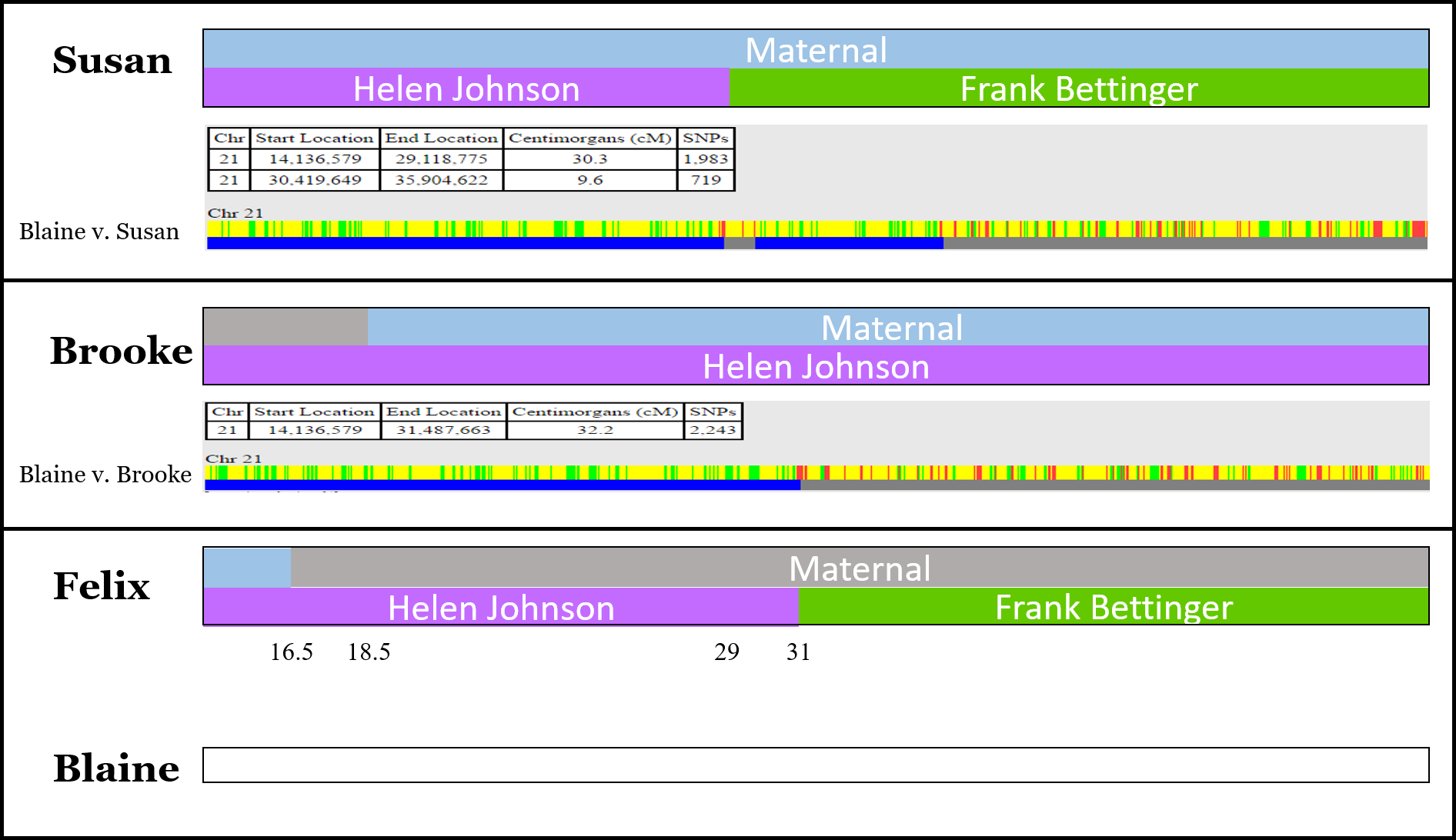
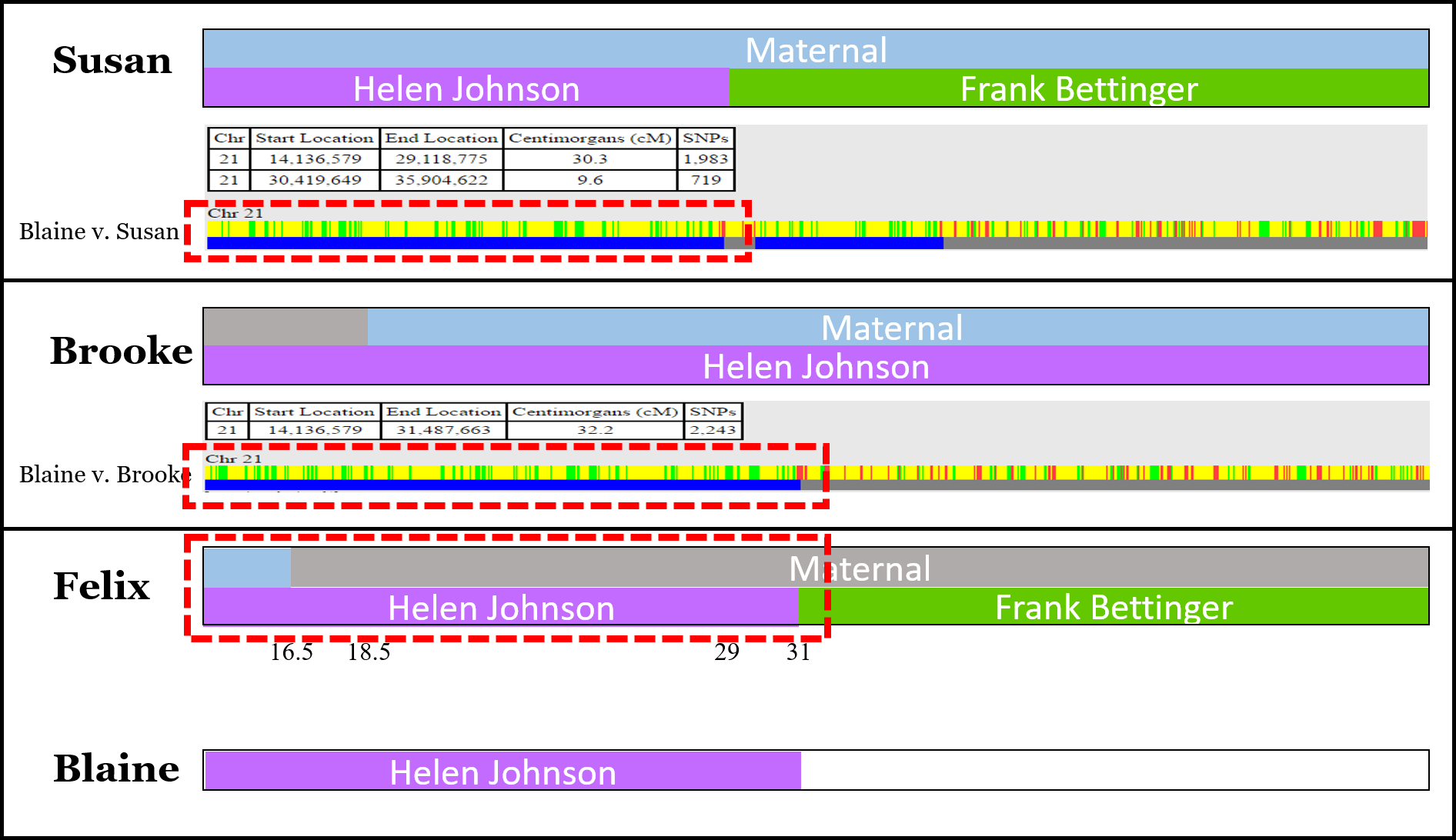
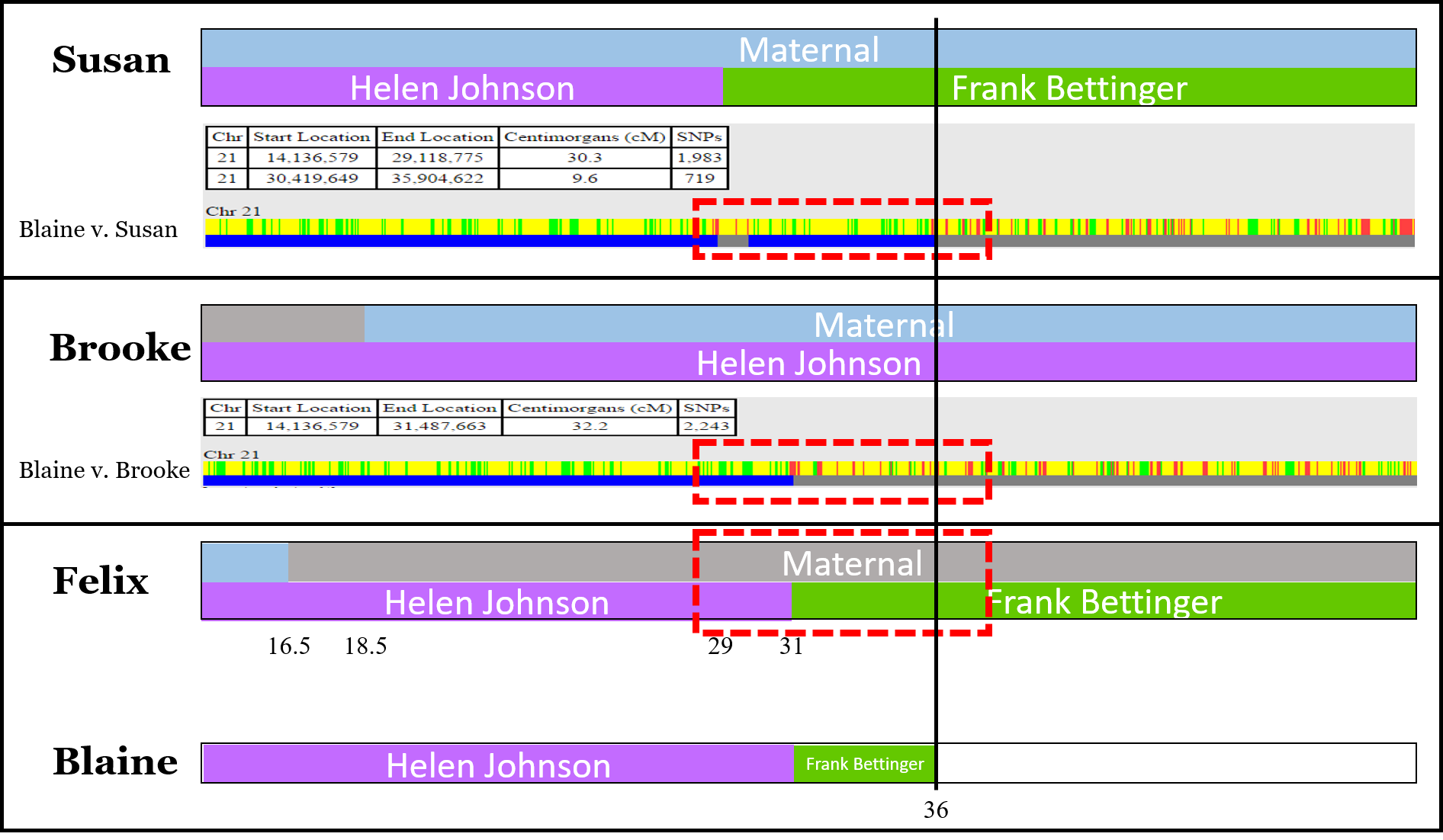
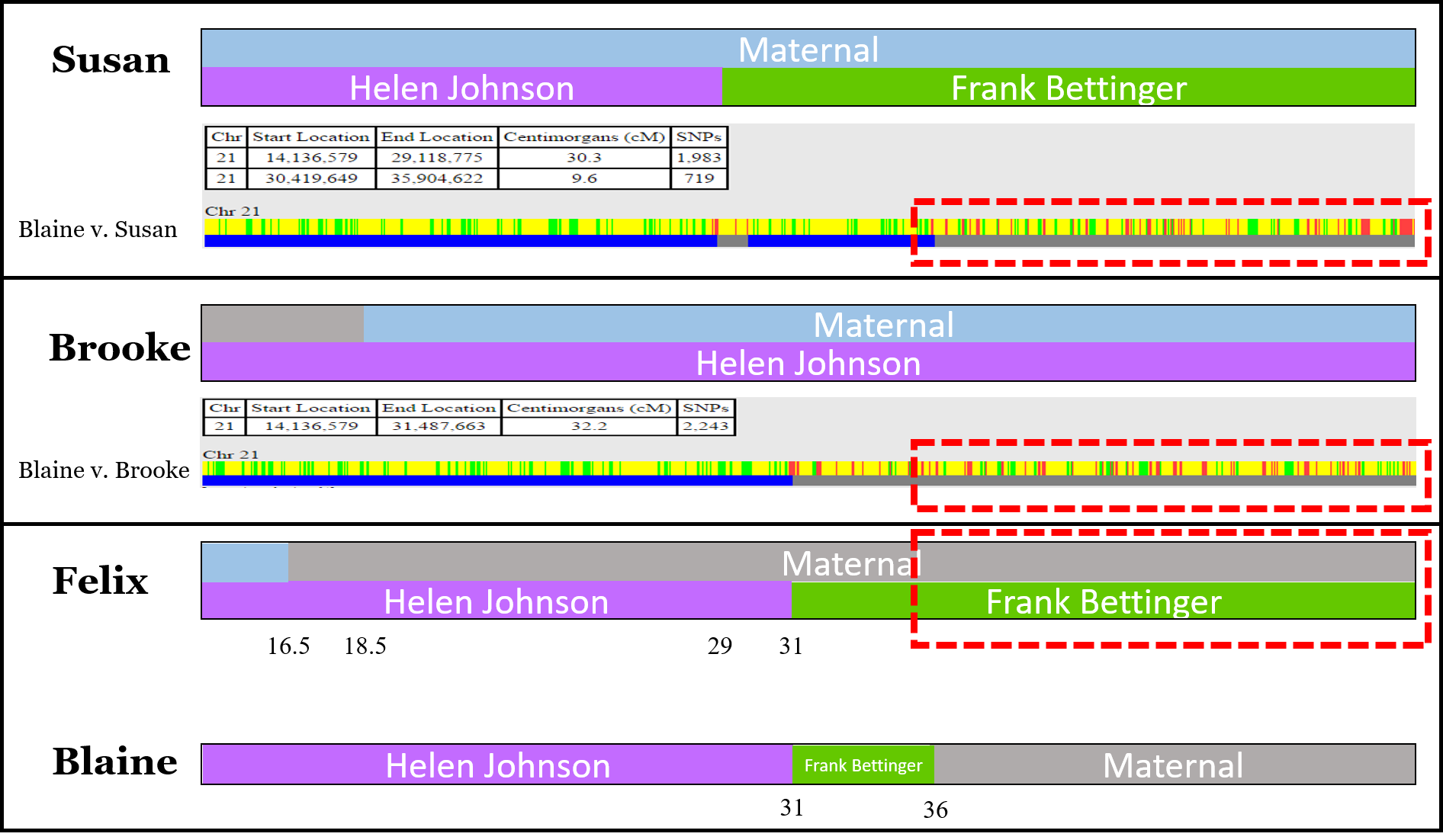
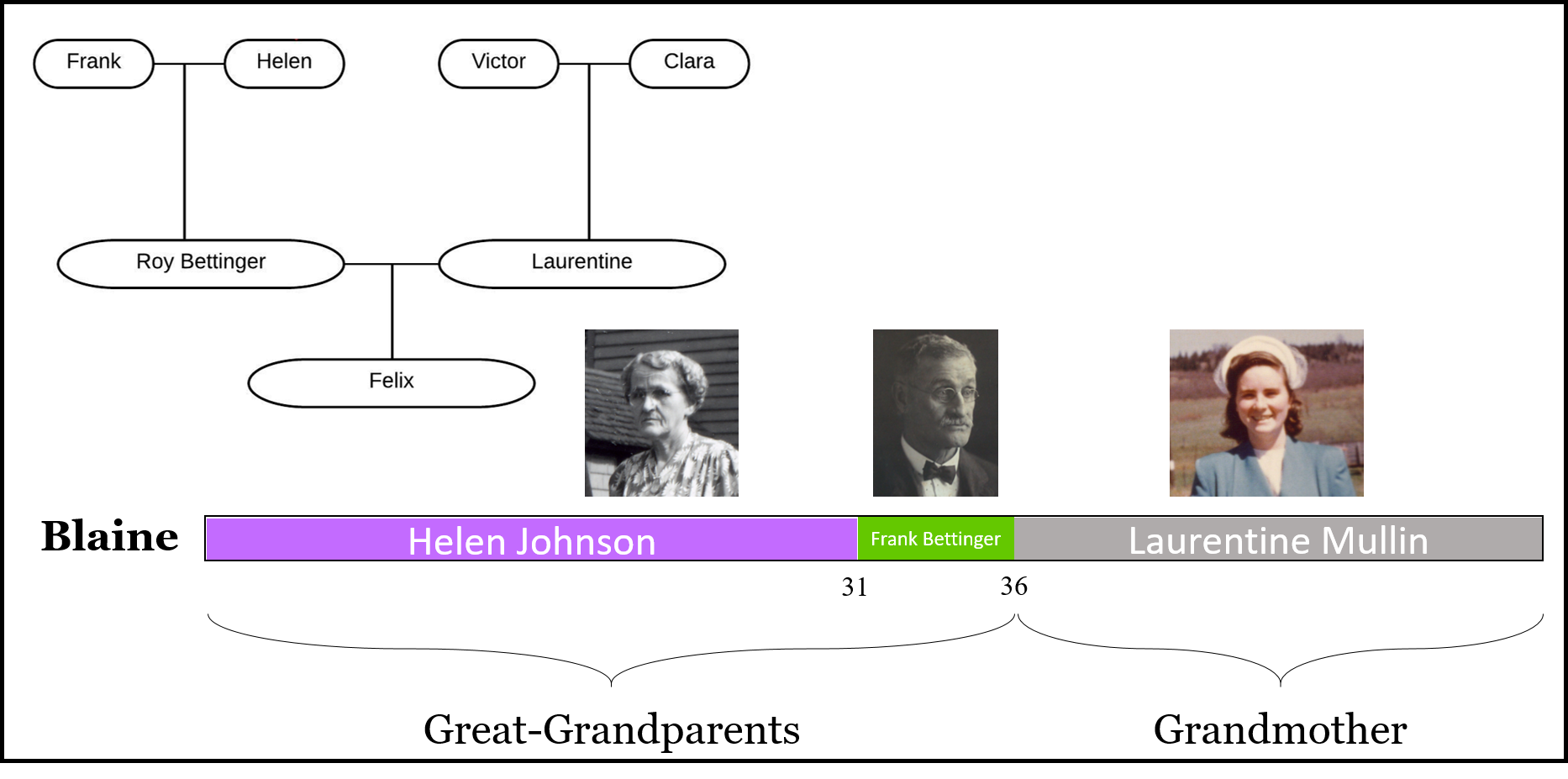

Blaine, I thought the gray segment was maternal grandparents and could not be allocated between male (maternal grandfather) or the female (maternal grandmother). Isn’t the gray possibly your grandfather? Yet, you have assigned it to your grandmother? Or, have I missed something?
Great question! Remember, though, that I was doing this for my father. So HIS gray maternal DNA is my paternal grandmother (I just can’t break it down any further). The green and purple are my paternal grandfather.
I should have made that clearer in the text!